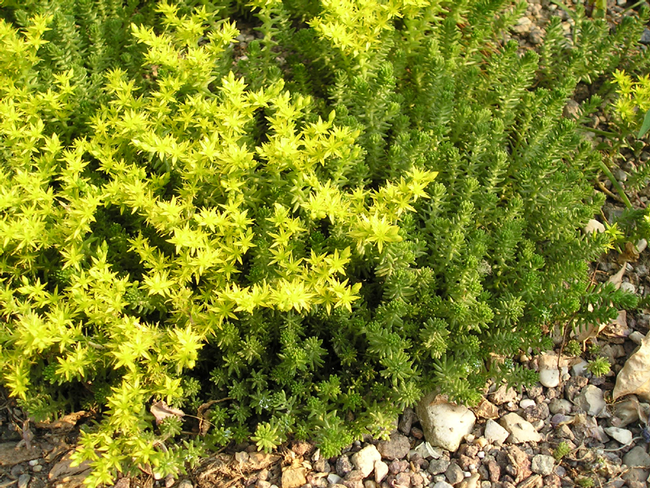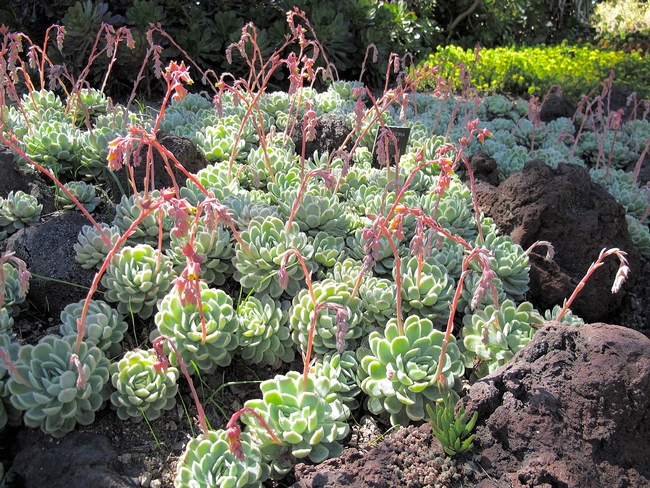The current emphasis on water-wise gardening has created an interest in succulents. All succulents are able to store water and food in their leaves, stems and roots. These stored nutrients can be released when needed. This makes them drought tolerant. Succulents require good drainage, deep but intermittent water, bright light, and good air circulation. The soil should be open and airy with low organic matter.
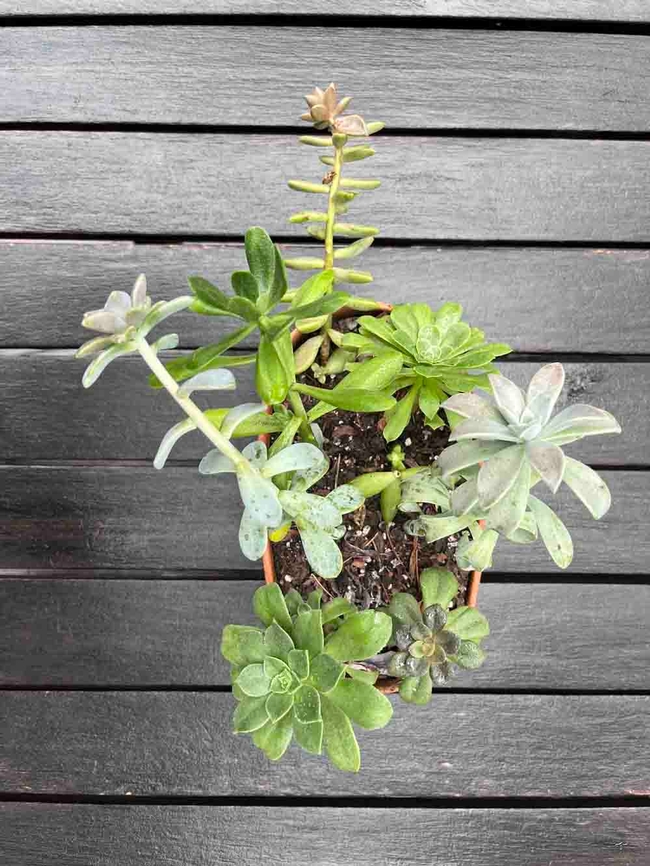
Because many purchased succulents are unmarked, while others are given by friends as cuttings, it can be difficult to know the genus of a particular plant. This is especially the case because the genera of Echeveria, Sempervivum, and Graptopetalum are similar in appearance. However, careful observation will aid in identifying succulents. First, look to see if the succulent is spiky or chubby, and whether it forms rosettes. What is the shape of the leaves? Look at size, texture, and color. Notice if offsets hang from the edges of a rosette, or attach to its center.
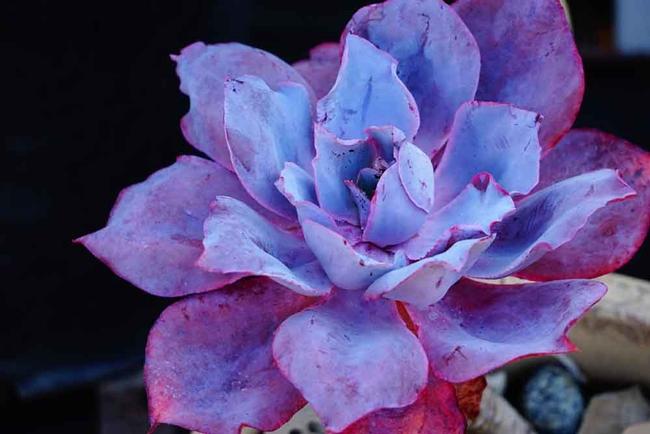
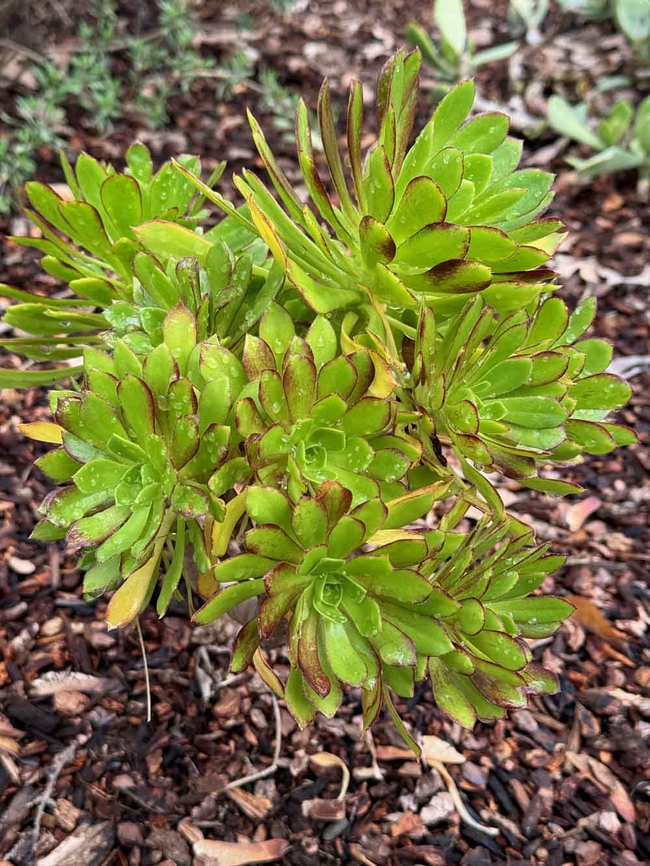
Sempervivums are native to Europe. Their value as talismans is reflected in their name semper (always) and vivus (living). This reputation comes from their ability to survive in freezing weather while their leaves stay green. Sempervivums are commonly called Houseleeks or Hen and Chickens. Open rosettes range from one to five inches across and form clumps to two feet or wider. The leaves of Sempervivum are narrower than those of Echeveria, they have pointy tips, andaregray-green to red-brown in color. Small pink, red, or orange star-shaped flowers arise on fleshy stems to 10 inches tall. These succulents reproduce from offsets attached to a stolon (a stem that can take root).The stolon breaks easily, allowing the tiny offsets to roll away before forming roots.
Graptopetalum are native to South America. These succulents are so closely related to Echeveria that they hybridize to form the intergeneric hybrid x Graptoveria. The rosettes are two to five inches in diameter and have gently pointed chubby leaves, noticeably thicker than those of Echeveria. The rosettes grow at the tips of ever-lengthening stems, creating a low cascading grouping about 12 inches tall. Commonly called Mexican Ghost Plant, their leaves are a pale, chalky, ghostlike gold or green. With partial shade and regular water the color changes to a mauve blue. The flowers are star-shaped, large, white-and-red or yellow and one-quarter of an inch in diameter. They bloom in spring and early summer. Graptopetalum reproduces by rosettes that break off and root.
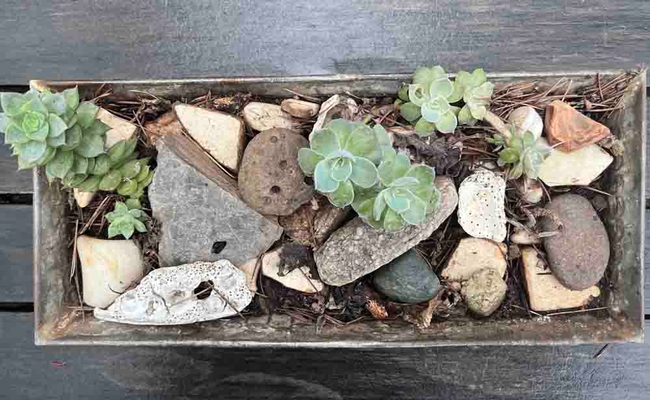
When looking at “mystery” succulents think in terms of leaf shape, color, and thickness. Then look to see if there are offsets. Are the offsets located on stolons or attached to a main stem? Watch for flowers and see if they are bell shaped or star shaped. All of these characteristics will provide information about the genus of the “mystery” succulent.
Table for identifying Echeveria, Sempervivum, and Graptopetalum:
|
Characteristics of common varieties |
Echeveria |
Sempervivum |
Graptopetalum |
|
Origin |
North & South America |
Europe |
South America |
|
Rosette size |
3/4”-20” diameter |
1”-5” diameter |
2”-5” diameter |
|
Offset Spread |
spread from a main stem |
clumping, stolon held |
rosettes break off from root |
|
Leaves |
thick & spoon-like |
narrow & pointy |
thickest & rounded |
|
Leaf color |
gray-green, bluish |
gray-green, red-brown |
chalky gold or green |
|
Flower shape |
bell shaped |
star shaped |
star shaped |
|
Flower color |
white, orange, pink, red |
red, yellow, pink |
white/red, yellow |
|
Flower growth pattern |
on stem amidst leaves |
on stolon from center |
stem from center |
|
Common name |
Hen & Chicks |
Hen & Chicks |
Ghost plant |
Table created by Barbara Ott
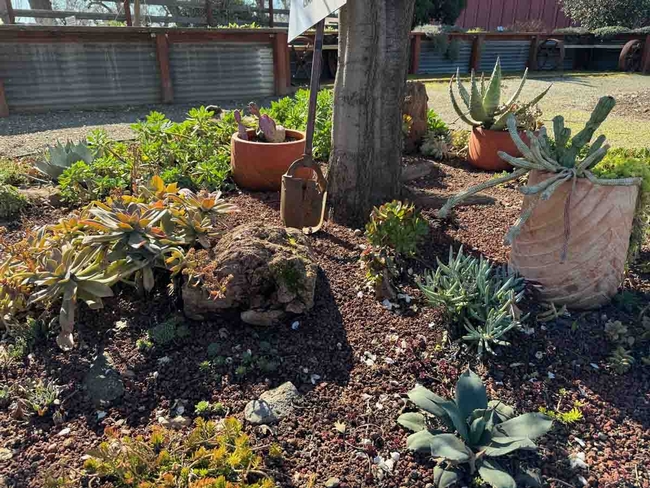
UC Master Gardeners of Butte County are part of the University of California Cooperative Extension (UCCE) system. To learn more about us and our upcoming events, and for help with gardening in our area visit our website. If you have a gardening question or problem, email the Hotline at mgbutte@ucanr.edu or leave a phone message on our Hotline at 530-552-5812. To speak to a Master Gardener about a gardening issue, or to drop by the MG office during Hotline hours, see the most current information on our Ask Us section of our website.
By Barbara Ott, UC Butte County Master Gardeners, August 25, 2017.
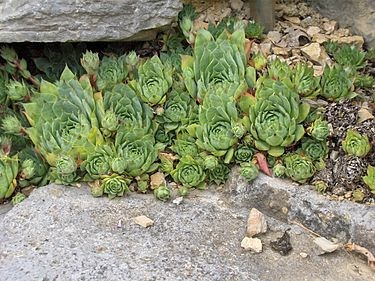
Succulents are one of the easiest plants to propagate. This can be done in a variety of ways: by removing “pups” or offsets, or through leaf cuttings, stem cuttings or divisions. Propagation is performed most successfully in autumn and spring. Although succulents are easy to propagate, some will take a year or more to become mature.
Offsets are small plants that grow at the base of the main specimen. Aloe, Echeveria, and Sempervivum (hens and chicks) all produce offsets. To propagate more plants from a mature offset-producing specimen, follow these steps:
1) Remove offsets with a sharp clipper, or by twisting gently.
2) Be careful to avoid damaging any roots that have already emerged.
3) Place the offsets into cactus mix or a combination of sand and perlite.
4) Spray water directly, but gently and sparingly, on the offset daily. Do not soak the soil.
5) Wait three to four weeks for strong roots to develop.
Sedum, Crassula, and Graptopetalum are best propagated by leaf cuttings. Each leaf can become a new plant. For propagating these species, follow these steps:
1) Choose a leaf in good health.
2) Pull the leaf off neatly. Leaves that drop from the plant can be used if they are healthy and plump. If you use clippers be sure the end of the leaf is not cut off.
3) Let the leaf end dry for 1-3 days. Do not water. This allows the wound to seal and keeps pathogens out during the rooting process.
4) Once the leaf ends are dry, place the leaves on top of dry cactus soil. Do not bury or semi-bury them into the soil. The roots will find their way into the soil on their own. You can also create a rooting medium by mixing together a 50/50 combination of compost and fine pumice or grit.
5) Spray with water sparingly every one to two days for four to six weeks. Do not soak.
6) After a few weeks you will see pink roots at the ends of the leaves and then tiny baby plants will begin to grow.
7) Once small plants have developed, separate them out and plant them in well-draining cactus soil, then water well once a week.
All succulents can be propagated by division or stem cuttings, but it is more efficient to divide or stem cut Aeonium, Sedum, Cotyledons and Sansevieria, as follows:
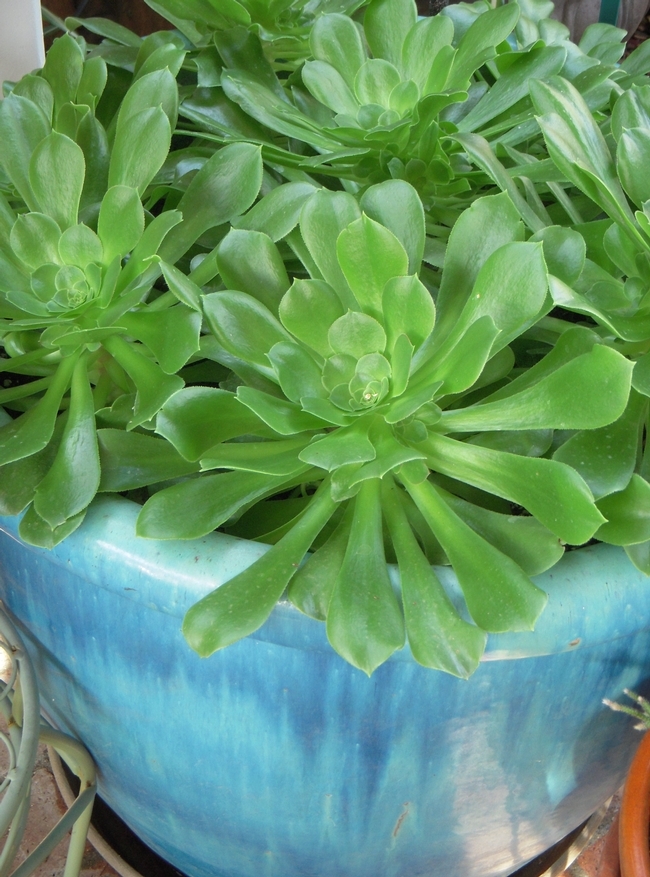
2) Let all the parts dry out and create a callous where they have been cut.
3) Once they are dry, put the sections into cactus soil.
4) Spray on top of the cuttings regularly but sparingly. Do not soak.
5) They are rooted when you see new growth.
If a succulent looks leggy and unhappy simply cut it back and create a new healthier plant. From one plant you can propagate enough succulents to plant them in masses. Enjoy the plant magic of propagating succulents!
Heads Up! The Master Gardeners will run a workshop on succulents Tuesday, September 26th, from 10–11:30 am at their Demonstration Garden at Patrick Ranch (10381 Midway, Durham). Learn how to select, plant, and care for succulents, and how to combine different succulents for color and textural interest in the garden. Registration is required. Register at our website: ucanr.edu/p/56426.
By Barbara Ott, Butte County Master Gardener, February 17, 2017.
The current emphasis on water-wise gardening has created an interest in succulents. All succulents are able to store water and food in their leaves, stems and roots. These stored nutrients can be released when needed. This makes them drought tolerant. Succulents require good drainage, deep but intermittent water, bright light, and good air circulation. The soil should be open and airy with low organic matter.
Many gardeners grow succulents in the Crassulaceae family. Among the most popular are Echeveria, Graptopetalum, Aeonium, and Sempervivum. Echeveria, Graptopetalum, and Aeonium are hardy to USDA zones 9-12 (Or Sunset zones 8, 9, 12-24); while the hardier Sempervivum can thrive in a broader range, down to zone 5 (or Sunset zones 2-24, according to the Sunset Western Garden Book).
Because many purchased succulents are unmarked, while others are given by friends as cuttings, it can be difficult to know the genus of a particular plant. This is especially the case because the genera of Echeveria, Sempervivum, and Graptopetalum are similar in appearance. However, careful observation will aid in identifying succulents. First, look to see if the succulent is spiky or chubby, and whether it forms rosettes. What is the shape of the leaves? Look at size, texture, and color. Notice if offsets hang from the edges of a rosette, or attach to its center.
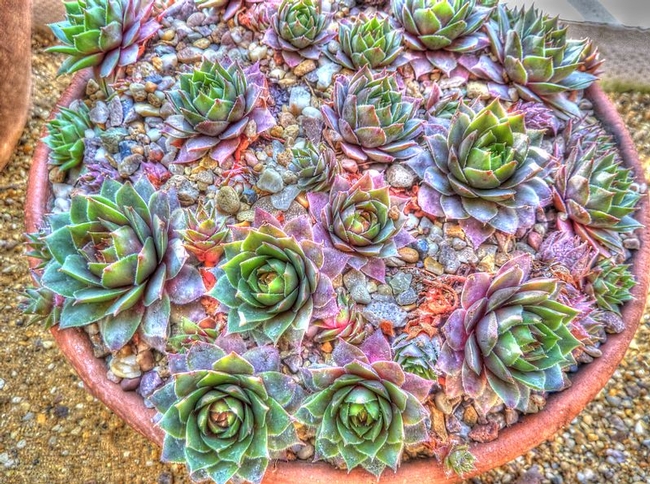
Echeverias are valued for their colors and variations. Native to the Americas, their rosettes range in size from three-quarters of an inch to 20 inches in diameter. Echeverias have thicker and wider leaves than Sempervivums. While both include varieties commonly called “hens and chicks” they are from different genera. The leaves of Echeveria are spoon-shaped, and gray, green or bluish in color. These plants flower in the warmer months. Their bell shaped flowers appear on stalks that rise up through the leaves, and can be white, orange, pink, or red. Echeveria offsets (chicks) grow out from a single base stem and form clumps.
Sempervivums are native to Europe. Their value as talismans is reflected in their name semper (always) and vivus (living). This reputation comes from their ability to survive in freezing weather while their leaves stay green. Sempervivums are commonly called Houseleeks or Hen and Chickens. Open rosettes range from one to five inches across and form clumps to two feet or wider. The leaves of Sempervivum are narrower than those of Echeveria, they have pointy tips, andaregray-green to red-brown in color. Small, pink, red, or orange star-shaped flowers arise on fleshy stems to 10 inches tall. These succulents reproduce from offsets attached to a stolon (a stem that can take root).The stolon breaks easily, allowing the tiny offsets to roll away before forming roots.
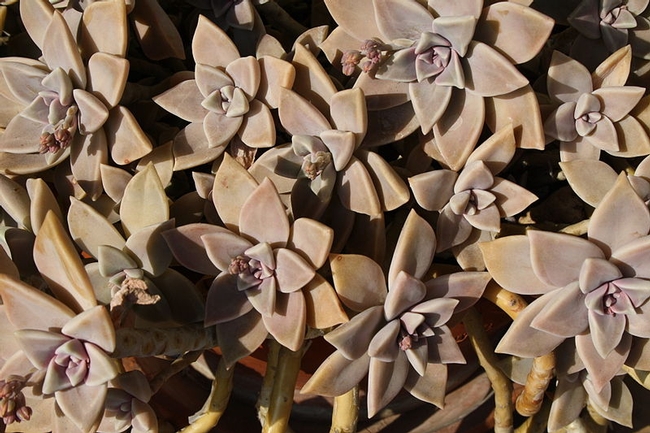
When looking at “mystery” succulents think in terms of leaf shape, color, and thickness. Then look to see if there are offsets. Are the offsets located on stolons or attached to a main stem? Watch for flowers and see if they are bell shaped or star shaped. All of these characteristics will provide information about the genus of the “mystery” succulent.
Photo credits: Wikipedia Commons
Table for identifying Echeveria, Sempervivum, and Graptopetalum:
|
Characteristics of common varieties |
Echeveria |
Sempervivum |
Graptopetalum |
|
Origin |
North & South America |
Europe |
South America |
|
Rosette size |
3/4”-20” diameter |
1”-5” diameter |
2”-5” diameter |
|
Offset Spread |
spread from a main stem |
clumping, stolon held |
rosettes break off from root |
|
Leaves |
thick & spoon-like |
narrow & pointy |
thickest & rounded |
|
Leaf color |
gray-green, bluish |
gray-green, red-brown |
chalky gold or green |
|
Flower shape |
bell shaped |
star shaped |
star shaped |
|
Flower color |
white, orange, pink, red |
red, yellow, pink |
white/red, yellow |
|
Flower growth pattern |
on stem amidst leaves |
on stolon from center |
stem from center |
|
Common name |
Hen & Chicks |
Hen & Chicks |
Ghost plant |
Table created by Barbara Ott
By Michele Carter, Butte County Master Gardener, January 2, 2015
Winter has finally arrived in the north state! Winter temperatures can pose a threat to the fruit and foliage of citrus, as well as other succulents, tender perennials, tropical and subtropical plants.
The most common type of frost in California is referred to as radiation frost. Radiation frost occurs on cold nights when the air is clear and still. Soil, buildings, plants, and other objects at the earth's surface act as a heat reservoir by absorbing heat during the day. Heat is lost, or radiated, from the earth's surface into the atmosphere and plants are damaged when enough heat is lost from this reservoir to lower the temperature at the surface to below critical temperatures. Greater damage occurs with colder temperatures or a longer duration of cold. Temperatures can drop more rapidly when the air is very dry and the dewpoint is low. If the dewpoint is very low a freeze can occur without the formation of dew and frost. This condition is known as a “black frost.”
Avoid planting frost-sensitive trees in the lowest areas of the yard or garden, as cold air tends to flow downhill and can accumulate in such depressions. Trees planted near structures or walls, particularly those with southwest exposure that absorb and retain reflected heat during the day, may be damaged less during periods of frost because that heat is released during the night. Fertilize and prune during the spring and early summer so that new foliage will have enough time to mature before the onset of cold weather. Bare, moist soil stores more heat during the day and radiates more heat during the night, so rake away mulch, ground cover, weeds and leaves from around the tree during cold weather.
Monitor weather forecasts and take note of how low temperatures will go, and for how long. When the weatherman warns of frost, there are several precautions you can take to protect your plants.
- Identify cold spots in your landscape by monitoring with thermometers
- Identify plants at risk: citrus, succulents, tender perennials, tropical & subtropical plants
- Have supplies ready: either sheets or blankets with stakes or a framework to hold covers off foliage, or frost cloth (which can lie directly on plant foliage); lights; wraps for trunks; thermometers.
- Wrap trunks of tender trees, using towels, blankets, rags or pipe insulation.
- Move potted plants to warmer spots next to the house or under a patio cover.
- Water plants and trees. Dry plants are more susceptible to damage and moist soil retains heat better than dry soil.
- Cover plants just before sunset to capture and hold in as much heat as possible. Remove sheets/blankets daily if it's sunny, to allow soil to absorb heat during the day.
- Add heat by hanging a 100-watt lamp designed for outdoors in the interior of the tree, or use a holiday string of outdoor lights (not LED lights, since they don't give off heat).
If a tree's or plant's larger branches sustain frost damage, don't prune away damaged wood or remove the plant too soon. Wait several months in order to assess the extent of the damage and allow time for possible recovery during warm weather. As new foliage begins to grow, frost-killed twigs and branches will be apparent and can be pruned at that time. Postpone heavy pruning until the following year to allow trees to regrow to the point where damaged wood can be clearly determined.
For more information visit the ANR Catalog, publication 8100 (Frost Protection for Citrus and Other Subtropicals).

